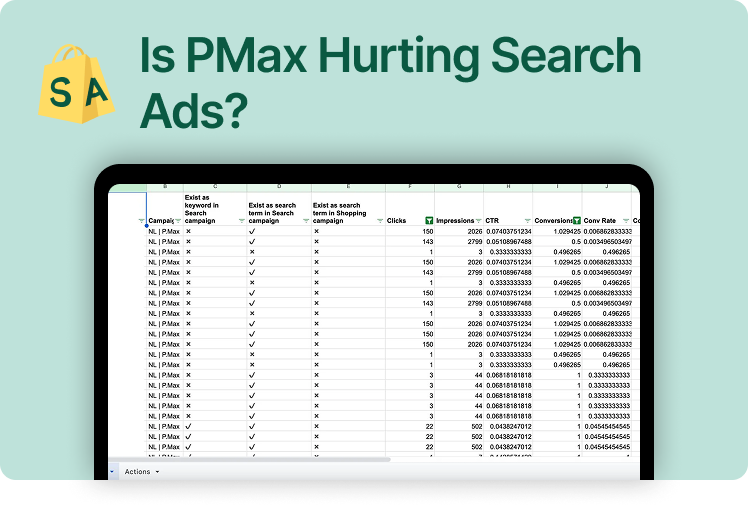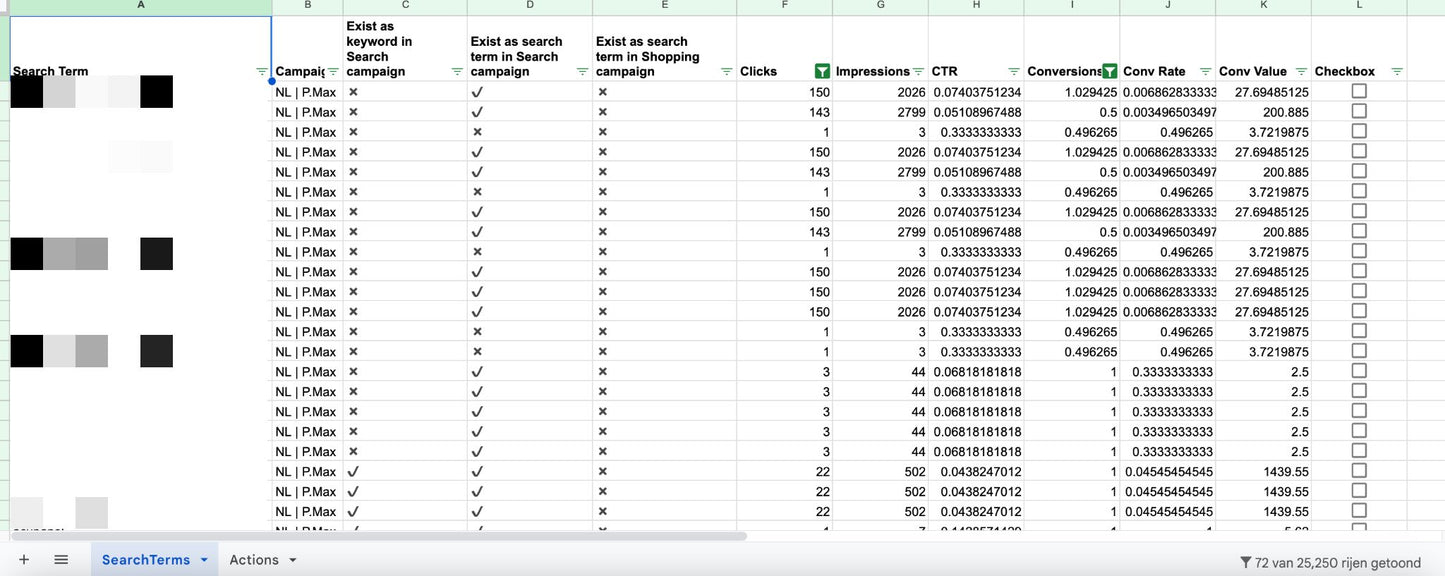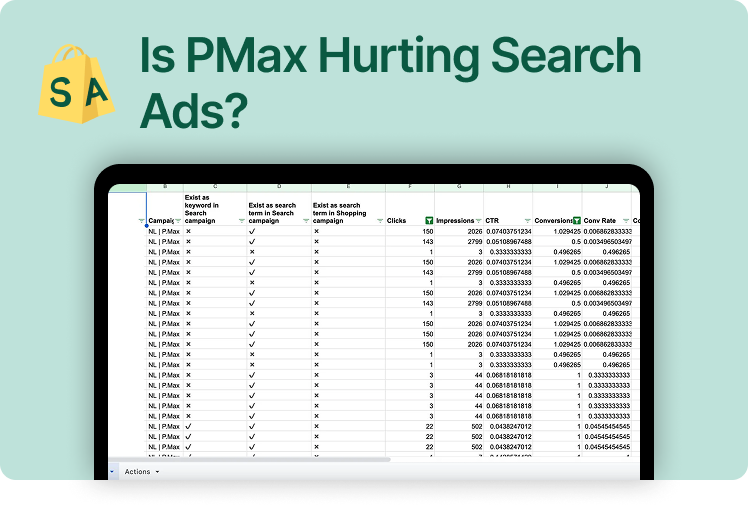Understanding how Google’s Performance Max (PMax) campaigns interact with traditional Search campaigns can be tricky. Are they competing or complementing each other? We analyzed over 3,300 non-retail PMax campaigns covering 1.2 million search terms to see how often they overlap—and what that means for your campaign performance.
Key insights on overlap and performance
1. Search term overlap is common but varies
-
67% of PMax campaigns had search term overlaps with Search campaigns.
-
Some campaigns showed no overlap, while others reached 100% overlap, meaning every PMax search term also matched a Search campaign keyword.
Why this matters: If your campaigns overlap heavily, you could be diluting performance by splitting traffic between less effective PMax ads and more relevant Search ads.
2. PMax Ads dominate on impressions, but search converts better
-
When search term overlap occurred, PMax ads had more impressions 61% of the time.
-
Despite this, Search ads outperformed PMax in key metrics:
-
Higher CTR in 65% of cases.
-
Higher conversion rates in 84% of cases.
-
Higher conversion values in 84.62% of cases.
-
What’s happening: Google prioritizes impressions based on Ad Rank. PMax may achieve a higher Ad Rank due to broader reach and different optimization signals, but Search campaigns typically deliver stronger performance for user intent-driven searches.
Where does Google draw the line on overlap?
Google’s documentation states that Search campaigns take priority for exact match keywords, but PMax can compete when search terms match phrase or broad-match keywords. We found that 45% of overlapping search terms triggered ads in both PMax and Search campaigns, leading to inconsistent user experiences depending on which campaign wins the auction.
3. The hidden issue of misspellings
Google no longer reports misspelled search terms in Search campaigns, but PMax does serve ads for them. This gap can lead to PMax serving ads instead of Search when users make minor typing errors (e.g., “papajohns” instead of “Papa Johns”). As a result, you could be missing valuable search traffic without even knowing it.
Why PMax doesn’t always win on conversions
Even though PMax outpaces Search in impressions, its performance in critical areas like CTR and conversion rates falls short. One major reason: Search ads typically have more relevant ad copy and landing pages, aligned closely with user search intent.
How to control your search terms and improve results
To maximize performance and reduce overlap issues, follow these steps:
-
Review PMax search term data.
-
Navigate to ‘Insights and Reports’ within Google Ads and download the PMax search terms report.
-
Identify top PMax search terms that aren’t covered by Search keywords.
-
-
Add exact match keywords in Search.
-
Prioritize high-performing PMax search terms by adding them as exact match keywords in Search campaigns.
-
Ensure each Search ad group has optimized ad copy and landing pages to maximize relevance and CTR.
-
-
Ignore Google’s ‘Remove Redundant Keywords’ Recommendation.
-
If you remove overlapping keywords, you may give PMax more control, leading to fewer Search ad impressions. Maintain those keywords to prioritize Search ads over PMax.
-
What you can do if PMax overlaps too much
If you find significant overlap and low-performing PMax search terms, consider these options:
-
Expand Search campaigns: Focus on adding high-intent keywords and optimizing Search ad groups.
-
Pause PMax campaigns temporarily: Many large advertisers have shifted back to expanding Search and Display campaigns after seeing better ROI compared to PMax.
Final takeaways
-
PMax works well for broad reach and brand awareness, but for lead generation and high-converting searches, Search campaigns typically deliver better results.
-
By closely managing search term overlap and adding exact match keywords, you can boost conversions and maximize ROI.







